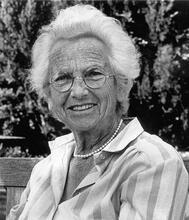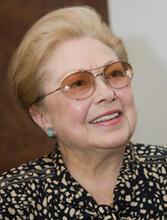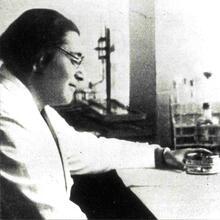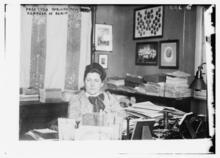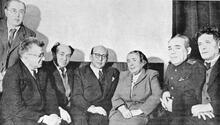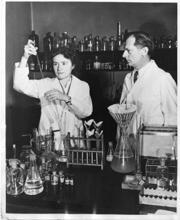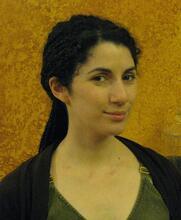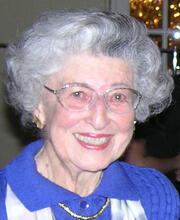Rahel Hirsch
Rahel Hirsch first trained to be a teacher and then became licensed as a physician in 1903. The same year, she began working as a volunteer assistant at the Medical Clinic of the Berlin Charité. Although she was later appointed head of the polyclinic and earned a professorship, Hirsch was never a paid employee. Her research is recognized today, but she was forced to earn a living as a doctor outside of the Charité and established a private practice after leaving the organization in 1919. Hirsch emigrated to England in 1938, finding employment as a laboratory assistant and librarian, but she struggled with mental illness after the war and died in a psychiatric hospital in 1953.
Early Life
Physiologist, physician, and teacher, Rahel Hirsch was born in Frankfurt am Main on September 15, 1870, one of the eleven children of Dr. Mendel Hirsch. Rahel grew up in a cultured, Jewishly knowledgeable family. Her grandfather was Samson Raphael Hirsch (1808–1888), the founder and spiritual leader of neo-Orthodoxy and one of the major rabbinical figures of the nineteenth century. Her father, who was the principal of the Jewish community’s Realschule and a leading figure in the strictly Orthodox Jewish community, ensured that she receive good schooling by sending her to a girls’ school in her native city.
Since women were not yet admitted to German universities, Rahel went to the teachers’ seminary in Wiesbaden, where she received her teaching certificate in May 1889. For want of any alternative, she taught until 1898, but since she longed to be a physician she went to Zürich, where women had been admitted to medical school since 1840. However, when German universities followed suit, she returned, studying first in Leipzig and later, from November 1900, in Strassburg. Here she passed the state examination in July 1903, wrote her dissertation on the impact of glucose and was immediately licensed as a physician.
Career at the Berlin Charité
Although the world of healing was now open to her, she opted to serve as a volunteer assistant to the physiologist Professor Friedrich Kraus (1858–1936) at the Medical Clinic of the Berlin Charité, where she remained until 1919. This was a surprising choice, since she had never previously had any contact with Berlin and must have been aware of the difficulties she would encounter as a woman in this environment, where men—both civilians and military—reigned supreme. Presumably what attracted her was the reputation enjoyed by the Charité and its celebrated scientists, such as the surgeon Ernst von Bergmann (1836–1907), anatomist Wilhelm von Waldeyer-Hartz (1836–1921), and pediatrician Otto Huebner (1843–1926). Preceded only by Helenefriederike Stelzner (1861–1937), who began work at the Charité in the same year as herself, she was the second woman to be employed there in its almost 200-year history.
At a meeting of the Society of the Charité’s Directors on November 7, 1907, Rahel Hirsch presented the findings of her research, in which she maintained that minute corpuscles, measuring no more than 0.1 mm, could penetrate the kidneys and be harmlessly expelled in urine. The publication of these findings in a respected medical journal in spring 1906 had been totally ignored and on this occasion, too, her presentation met first with silence and then with ridicule, one of those present mockingly remarking that “the young lady’s powder puff must have fallen into her chamber pot.” The physicians who were present were convinced that only totally liquid substances could pass through the kidneys as urine. Rahel Hirsch must have been deeply disappointed, since she had spent much time on the subject, conducted numerous experiments, kept a precise record of the results and was certain of being correct. She used grains of starch, which she then discovered, unaltered, in discharged urine.
Hirsch may have consoled herself with the knowledge that in 1905 August von Wasserman (1866–1925), Fritz Schaudinn (1871–1906), and Erich Hoffman (1868–1959) had met with similarly skeptical resistance from their colleagues when they presented their discovery of the causes of syphilis. She must have had some inkling of what was about to happen to her, since she concluded her presentation with the words, “In this case, perception may prove less difficult than acknowledgement.” She was unable to convince others of her findings, even when a French researcher confirmed them in 1910. Only in 1957 did G. Volkheimer, an assistant at the Charité who came across her work, begin her rehabilitation by retroactively naming the discovery the “Hirsch Effect.” Despite this initial setback, Rahel Hirsch was appointed head of the polyclinic at the Charité’s Medical Clinic II in 1908. However, at no time was she a paid employee at the Charité.
Life and Career beyond the Charité
Unlike other women physicians of her time and of the earlier “Zürich generation,” Rahel Hirsch was not particularly active in the women’s movement and appears never to have belonged to a women’s organization. Nevertheless, a number of her publications indicate the extent to which she considered herself a “woman doctor” and wished to make public health available to women. This related especially to the topics of hygiene, nutrition, and physical strengthening of women with which women physicians were increasingly concerned. In 1913 she published Women’s Physical Culture, two lectures on women’s sport, a topic that was hardly dealt with at the time. In an article published in the esteemed Munich Medical Weekly, she urged her male colleagues not always to look at women from a gynecological perspective. She countered the contemporary widespread pseudo-theory that women’s inferiority to men was biologically determined by the lighter weight of women’s brain, arguing that “women’s physical and psychological weakness is not her normal physiological condition, but rather the result of faulty upbringing.”
A typical example of her work is to be found in her treatment of uterine prolapse, particularly after pregnancy. Recommending gymnastics, self-massage and healthy diet, she maintained that this condition was not inevitable, even at a time of multiple births. In this respect, she noted wide scope for work by midwives, who had up till then never received adequate training in those areas. She urged the overall strengthening of women’s bodies from early childhood on and education in “purposeful nutrition.”
Understandably, Rahel Hirsch’s ambition was to engage in medical research, and she published some thirty articles, mostly while she was still at the Charité. However, since she received no salary, even after being promoted to a professorship in November 1913—becoming the third woman and the first Jew and woman to be thus promoted—she had to earn a living as a doctor. She left the Charité in 1919, possibly because the directorship of the Polyclinic was handed over to Theodor Brugsch on his return from army service. As a woman and a Jew, she could not possibly compete with him.
Later Life
Hirsch established a private practice, first in the Augusta Strasse and, in 1926, on the elegant Kurfürstendamm, where she also had modern x-ray equipment and where her wealthy clientele enabled her to live comfortably. Little is known about her personal life, such as her connections with the Jewish community. In 1933, when she was forbidden to practice, she moved to a less distinguished address and did what work she could for her fellow Jews. In October 1938, shortly after the Munich agreement, she emigrated to London, where she lived with her sister and received financial help from relatives and welfare organizations. Unable to work as a doctor, she found employment as a laboratory assistant and librarian. She left London for Yorkshire, returning to the capital at the end of the war. Depression, persecution complex, and hallucinations—the result of her experiences with the National Socialists—led to her being committed to a psychiatric hospital, where she died on October 6, 1953. She was buried in one of London’s Jewish cemeteries.
Her medical reputation was ensured by the efforts of G. Wolkheimer. Every textbook of internal medicine and every medical lexicon refers to the Hirsch Effect. The State of Israel honored her by including her in its Gallery of Famous Jewish Scientists in Jerusalem. Since mid-September 1995 a bronze bust by Susanne Wehland in the old lecture hall for internal medicine at the Charité keeps alive the memory of Prussia’s first woman professor.
Selected Works
“Ein Betrag von der Lehre von der Glykolyse.” Strasbourg 1903.
“Körperkultur der Frau.” Berlin, Vienna: 1913.
“Unfall und innere Medizin.” Berlin: 1914.
“Therapeutisches Taschenbuch der Elektro- und Strahlenmedizin.” Berlin: 1920.
Ben-Zev, Hedvah. Rahel Hirsch Preußens erste Medizinprofessorin. Berlin, 2005.
Chevallier, Sonja. Fräulein Professor: Lebensspuren der Ärztin Rahel Hirsch 1870–1953. Düsseldorf: 1998.
Jüdisches Lexikon. Berlin: 1928.
Lexikon der Frau. Zürich: 1954.
Rosin, H. Die Juden in der Medizin. Berlin: 1926.
Wininger, S. Jüdische Nationalbiographie. Berlin: 1928.
Winkelmann, Adelheid. “Medizinhistorische Betrachtungen zum Hirsch-Effekt.” Med. Diss. Berlin: 1965.
Jüdische Frauen im 19. Und 20. Jahrhundret: Lexikon zu Leben und Werk. Edited by Jutta Dick and Marina Sassenberg. Rowohlt, Reinbek, 1993.



